Case Study: Port of Port Townsend Stormwater Filtration
December, 2024 Posted at 19:06h in Biochar for Remediation: Research and Case Studies
Port of Port Townsend removes 97% of metals in wood-based biochar stormwater filtration project
The Port of Port Townsend, Washington conducted a pilot study using wood-based biochar in stormwater filtration devices to reduce copper and zinc concentrations in Port discharges. The project included preliminary laboratory testing to optimize field set-ups, pilot testing of two filtration devices, full-scale construction and installation of wood-based biochar-based treatment, and follow-on monitoring.
Results:
The wood-based biochar filtration system was effective at removing copper and zinc from stormwater runoff (this included metal roof run off). Initial laboratory testing showed that certain wood-based biochar filtration media mixtures removed more than 97% of copper and zine from water at high flow rates.
Source: Grey et al. 2015
